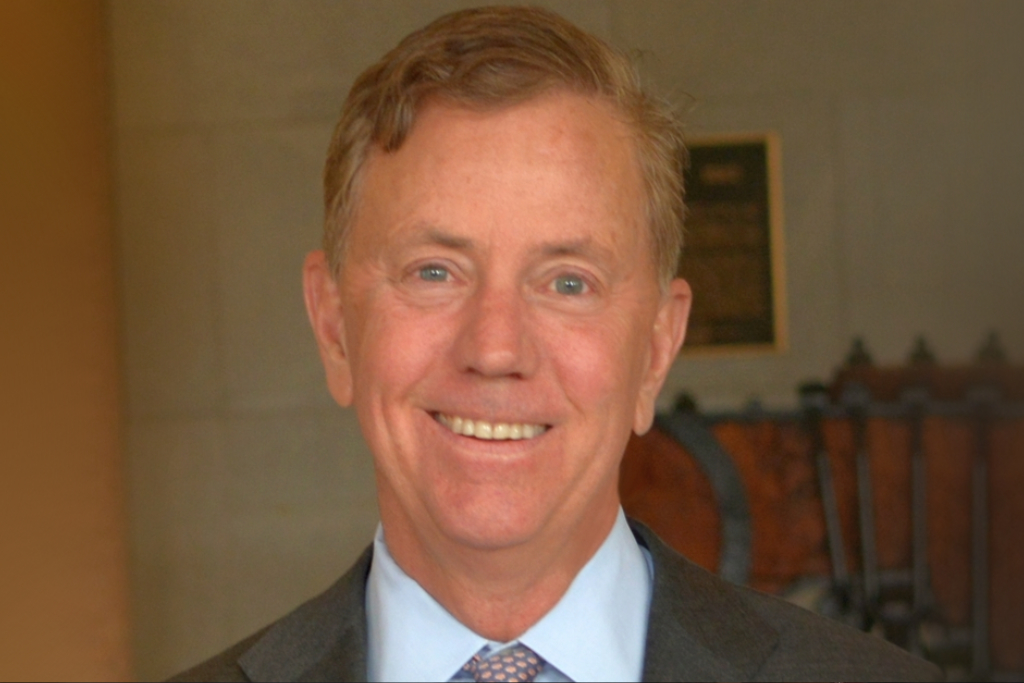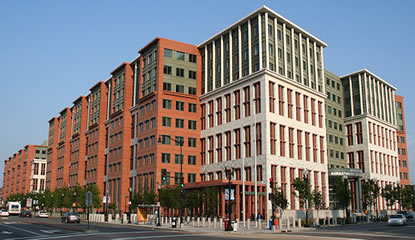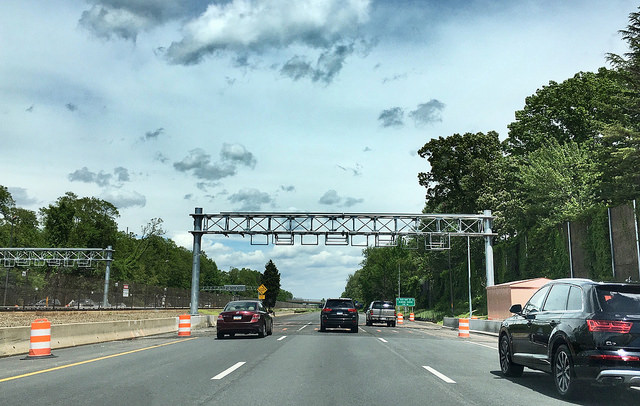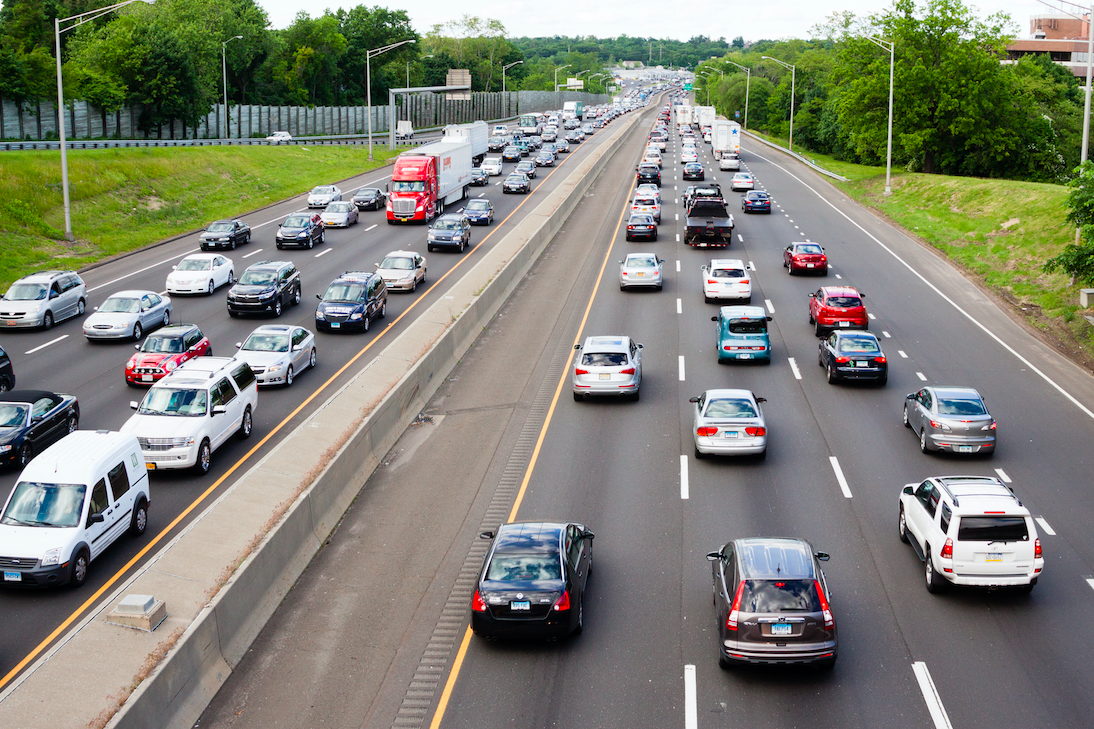The administration and legislative supporters of tolls have marketed their proposal with claims that a statewide tolling plan, including significant discounts for in-state drivers, would result in the state collecting high levels of revenue from out-of-state drivers. This, they have said, justifies the extremely high construction and maintenance costs of tolling, as well as the costs to state residents. As the following discussion reveals, however, there is virtually no reason to believe that the United States Department of Transportation will authorize the state’s plan or anything like it. Nor is there any reason to believe that the state’s cost projections are objective and reliable under any scenario.
Will supporters of tolls commit, in their proposed legislation, to canceling the project if their plans are not authorized as submitted (and as sold to us) by the federal government? Will they condition implementation on a finding by a truly neutral and independent reviewer that the plan actually authorized by the feds will really bring into the treasury the same percentage of out-of-state revenue as is currently projected? Will they similarly condition it on an objective finding that out-of-state revenue will be significantly more than the actual annualized costs of constructing and maintaining the toll system, and collecting the tolls? If not, then we know they have no faith in their projections and are telling us whatever they think we want to hear to get tolls passed – without regard for whether it’s true or not.
Everyone knows that tolling is a very expensive way to raise revenue. Toll supporters have claimed that this hefty expense is justified because tolls will bring in far more revenue from out-of-state drivers than it will cost to construct, maintain and collect.
There are fundamental reasons, though, to doubt both parts of that proposition. In fact, there’s significant reason to worry that any tolling system that can actually be established in Connecticut, given the constraints of federal law, might cost more to build and maintain than it will raise from out-of-state drivers.
If this is true, then Connecticut’s taxpayers will be made worse off by tolls than by virtually any other available means of raising the money. Even if costs “only” approach net out-of-state revenue, then the key selling point for tolls has been thoroughly refuted. If, once costs are paid, we were only to net 7 or 8 cents from out-of-staters for every dollar raised on Connecticut’s overtaxed residents, would anyone support tolls?
As Yankee Institute reported last week, there are grave reasons to doubt the accuracy of the state’s figures from the start. The firm they hired to estimate costs and revenues, CDM Smith, is a key member of a pro-tolls trade group. It, and the trade group, are programatically committed to maximizing the reach of tolls throughout the country. Its cost estimates – less than 10 percent in maintenance every year, with an annualized construction cost of about 3.5 percent – are radically less than what actual costs have historically been shown to be on other toll roads – perhaps by more than a factor of three. Meanwhile, CDM Smith has been shown significantly to overestimate revenues while underestimating costs in past studies.
All of this suggests that annual costs will actually constitute a much higher portion of total revenues than has yet been estimated.
As it happens, though, there is a far more fundamental reason to doubt all the representations toll supporters have made about their tolling plan. In short: the state’s plan will likely not receive federal approval in anything like its current form. More, the features that would push up the relative value of out-of-state contributions while decreasing costs and tolls paid by residents appear, in many cases, least likely to be authorized.
In other words, the tolling plan that we’re being sold, along with the advantages said to arise from it, appear to be little more than a fantasy. Here’s why.
- 1. The only current federal program that could even conceivably allow “broadcast” tolling of already existing lanes and highways is a congestion-abatement program. It does not authorize tolling when and where the roads are not regularly congested. This means that most tolling outside of Fairfield County will probably not be authorized, which means that a much higher percentage of tolls than currently advertised will fall on Connecticut residents.
As a baseline rule, federal law does not permit tolling of existing lanes and existing roads. It permits tolling of new roads, and of new lanes on existing roads. These latter are sometimes called HOT (“High-Occupancy and Toll”) lanes.
There are only two exceptions to this general rule. One is a program that allows tolling of specific transportation structures – like bridges – for the purpose of rebuilding or replacing those exact structures. It is universally recognized – even by the tolling-industry representative CDM Smith – that this program will not permit statewide highway tolling in Connecticut.
The second is the “Value-Pricing Pilot Program,” (“VPPP”) which is a consultant’s rebranding of the congestion-pricing pilot program. As both names suggest, the key to authorization under this pilot program is congestion; the program is designed to reduce congestion on heavily used roads. It permits tolling during congested periods to encourage users to switch their travel to less congested times. Where appropriate, it allows for increased tolls during rush hours and lower tolls during slower times.
No state has ever successfully tolled all its existing highways under the VPPP. This is, in a small sense, because no one has ever tried – but only in the same small sense in which no one has ever become President of the United States by turning around three times while chanting “I am president now.”
No state has ever successfully tolled all its existing highways under the VPPP. This is, in a small sense, because no one has ever tried – but only in the same small sense in which no one has ever become President of the United States by turning around three times while chanting “I am president now.”
The real reason why neither of those things has happened – and, in fact, why no one has ever tried them – is because they are not permitted under federal law, so there is no sense in trying them.
The VPPP can only be used to reduce congestion. Where there is no regular, predictable congestion on a stretch of highway, the VPPP is simply irrelevant. Tolling cannot reduce congestion where there is no daily snarl. Hence, many of the roads slated for tolling under the current plan cannot be authorized for tolling under the VPPP. This includes much of I-84 and I-95 east of New Haven, along with some other areas currently covered by the state plan.
There is rush-hour congestion around Hartford, but it is certainly is not all day long, which suggests that, at most, the state could get rush-hour tolling on I-84 and I-91 around Hartford approved. But rush-hour only tolling would drive up significantly the relative overhead of the project, because essentially the same fixed costs would be necessary to collect much less revenue.
Moreover, this significant contraction of the areas in which tolling can occur will force more of the costs of tolling onto Connecticut residents, rather than – as now advertised – out-of-state drivers. It is commuters who make up the vast majority of congestion-time drivers. Most of those commuters are in-state residents. Some Massachusetts residents commute into Hartford to work, but far more commuters into the capital are Connecticut residents.
Meanwhile, down in Fairfield County, most of the commuter traffic is Connecticut residents going into and out of New York City, not the reverse.
Finally, the long-haul truckers upon whom so much of the hope for out-of-state revenue depends, tend, by definition, to drive all the way through the state on one of the major interstates. But with the constraints imposed by the VPPP, only a few miles of those trips can be tolled. And even those can only be tolled if the trucks use the highways during the congested period.
Presumably the tolls would work to push some truckers – and other through-drivers – off of I-95 and Route 15 in the southwest corner and up onto I-84. Perhaps they will push those drivers to use I-84 around Hartford at some time other than the week-daily rush hour. But to the extent this is true – i.e., to the very extent that the VPPP works – there will be less tollable traffic for the state to collect from.
- 2. The very fact – as touted by Governor Lamont – that Connecticut will be able to keep its federal funding while tolling underscores that only very limited, congestion-abatement tolling will be permitted by the U.S. D.O.T. Anything else would blow up the whole Interstate funding system.
Governor Lamont recently gave an interview purportedly to reassure Connecticut that the state’s tolling plan would receive approval. Properly understood, though, it really drives home the point that only small portions of the plan have any hope of approval. This renders all the talking points upon which the state is relying meaningless. Either the administration and toll supporters haven’t any real idea what the federal government will approve, or they know, or they have a pretty good idea and refuse to tell us.

The latter is worse than the former, but both eliminate any possibility of supporting anything like the currently advertised tolling plans.
Broadcast tolling – tolling of whole highways, thruways, parkways and turnpikes – is permitted where the roads were “grandfathered” into the Interstate Highway System. In other words, they were started or fully completed before the system got up and running in the late ‘50s and early ‘60s, were built with state and toll-collected money, rather than with primarily federal funds, and are not eligible for federal funding.
The freedom to toll at the state’s discretion is in exchange for the state’s foregoing federal funds for those roads.
Governor Lamont recently gave an interview purportedly to reassure Connecticut that the state’s tolling plan would receive approval. Properly understood, though, it really drives home the point that only small portions of the plan have any hope of approval.
In the article linked above, Governor Lamont touted his conversation with U.S. Secretary of Transportation Elaine Chao, who – the governor reported – assured him that Connecticut would not be losing the millions in federal highway funds the state has been paid since it traded its plenary tolling authority for full interstate participation in the 1980s, and that it would still have access to federal highway funds in the future. He held this forth as a great victory.

What it means, however, is that the U.S. D.O.T. is not – cannot be – contemplating approval of a tolling plan that would see comprehensive tolling of the major interstates throughout Connecticut, which is at the very heart of the state’s proposal.
Far less could it be considering statewide tolling that included the resident-favoring goodies like Connecticut-issued EZ pass discounts and commuter discounts seen in some other states (more about that below). Because if it did approve such a plan, then the U.S. D.O.T. would be offering Connecticut most or all the benefits of maintaining a turnpike along with all of the benefits of having roads in the federally subsidized highway system.
If Connecticut were granted this unheard-of double-dipping opportunity, then all other states would want it as well. Every state would seek to throw up tolls on all its highways while continuing to collect federal subsidies for maintaining those same roads. Every state with a turnpike, a thruway or a parkway would demand not only federal aid for those roads for coming years, but decades of back payments as well. And the federal government would, having granted this status to Connecticut, have no principled ground on which to refuse.
The federal government will not, in an offhanded and absentminded sort of way, completely eviscerate 60 years of federal highway policy, thereby costing it hundreds of billions of dollars at a stroke. It certainly isn’t going to do it for the notional benefit of helping Connecticut out of a budget crisis entirely of its own making, and arising from the fact that the state refuses unequivocally to bring its labor costs and regulatory policy into line with states that can pay their own bills.
- 3. The Commerce Clause of the United States Constitution would appear to forbid a “commuter’s discount” that would reward heavy use of tolled roads and that would effectively distinguish between in-state and out-of-state residents. Moreover, a heavy-use discount would be antithetical to the anti-congestion purposes of the VPPP. The loss of this presumed discount further undermines claims that a significant fraction of toll revenues will be raised from out-of-staters.
Another central feature of the state’s tolling plan – and another feature that raises predictions about relative out-of-state take, is the “commuter’s discount.”
The idea is that the state would offer frequent users of Connecticut’s highways, who would mostly (though not exclusively) be Connecticut residents, a lower cost-per-mile toll rate. This would have the effect of reducing the total take on Connecticut drivers, and raising the percentage taken from out-of-staters.
The problem with this plan is that there is every reason to believe that the Department of Transportation is forbidden from authorizing it.

As the U.S. Supreme Court has explained, in order for tolls or other tariffs on interstate travel even to be constitutional under the Commerce Clause, much less authorizable by the U.S. D.O.T., the tolls have to be “(1) … based on some fair approximation of use of the facilities, (2) … not excessive in relation to the benefits conferred, and (3) … not discriminat[ory] against interstate commerce.”1
The commuter’s discount cannot survive any prong of this test.
A discount that reduces the price of use as a result of higher use explicitly diverges from a pricing structure in which fees approximate use. If there’s a discounted rate and a full rate for use of the same roads at the same time, either one or the other of those rates must be excessive in relation to the benefits conferred. And because the vast majority of the commuters on Connecticut’s roads are Connecticut residents, the discount will go mostly to Connecticut residents.
In fact, it’s now being sold to Connecticut voters as a discount for the state’s residents – but on that very ground, it is unconstitutional. Additionally, as the discount would be denied to non-passenger vehicles, it would further fail these tests.
It is true that in some circumstances these commuter discounts have been offered in other states. But so far as we at Yankee Institute can tell, they have been permitted only in tolling situations in which state money or toll money paid for the roads in the first place and pay for their upkeep. As discussed in the last section, that will not be the case here in Connecticut – as the governor himself has raised as a selling point for his tolling plan.
There is no way whatever that a commuter’s discount – i.e., a discount for heavy use, presumably during the commute period – could be authorized under a program designed primarily to reduce congestion. The concepts are antithetical.
Finally, immutably, there is this: the only way that broadcast Connecticut tolling has any chance of authorization is under the VPPP. But the VPPP is explicitly and statutorily a program designed to limit highway congestion. There is no way whatever that a commuter’s discount – i.e., a discount for heavy use, presumably during the commute period – could be authorized under a program designed primarily to reduce congestion. The concepts are antithetical.
Needless to say, if the commuter’s discount is stripped out of the state’s proposal, costs on state residents rise, which reduces the percentage of revenue that will be generated from out-of-staters.
- 4. The discount for in-state EZ passes is suspect exactly to the extent that it brings extra net out-of-state revenue to the Connecticut treasury.
Supporters of the state tolling plan have also indicated that state residents will be benefited, and out-of-staters relatively encumbered, because the state can offer a discount to holders of EZ passes sold by the state. It is presumed that these passes will be bought primarily by state residents, so that an additional in-state discount can be provided.
This proposal, however, runs into a similar problem as the commuter’s discount. If the higher charge on out-of-staters is just enough to cover the additional cost of collecting tolls from out-of-state EZ passes, then it should both be small and, more importantly to the “soak out-of-staters” argument, entirely used up by those extra costs of collection, so that the net contribution to the treasury would be exactly the same for both in-staters and out-of-staters.
To the very extent that any net premium is extracted from out-of-staters by this price discrimination, then the very fact of that premium will itself be a demonstration that the Commerce Clause is being violated. We should expect that the U.S. D.O.T. will not authorize any net premium, then, and that this in-state discount is also effectively illusory.
- 5. All of these factors mean that the “out-of-state” premium is surely much smaller than advertised and might be entirely swallowed up by the costs of any tolling plan that actually gets authorized.
From the discussion above, along with our previous article, a series of conclusions emerge.
- The state’s cost figures were probably always significantly understated.
- The percentage of revenue to be expected from out-of-staters was probably always significantly overstated.
- There is no reason to believe that the U.S. D.O.T. will or can approve statewide tolls, or anything like it. This will decrease both the total and relative value of out-of-state revenue, while increasing the relative cost of the project (i.e., the costs expended for every dollar in revenue netted).
- There is significant reason to doubt that the U.S. D.O.T. will or can approve a “commuter’s discount.” This will further decrease the relative value of out-of-state revenue still further, while increasing the cost on Connecticut residents.
- There is significant reason to doubt that the U.S. D.O.T. will or can approve a Connecticut EZ pass discount that results in a net (i.e., after related recovery costs) per-mile premium charge for out-of-state drivers. This will yet further decrease the relative contribution from out-of-staters.
Our work indicates that the state’s tolling plan almost certainly cannot be approved in anything like its current form, and that what could be authorized would fail to bring in anything like the currently projected funds at the currently projected toll rates, and would bring in much less from out-of-state drivers than we have been promised.
Perhaps the administration and toll-supporters in the General Assembly disagree with this conclusion, while having acted in the best of good faith so far.
If so, then it is incumbent upon them to amend their tolling proposals to ensure that tolling will be cancelled if their predictions are not borne out. They must set the program to cancel automatically if statewide tolling is not authorized, or if the commuter’s discount is not authorized.
Most particularly, they must set the program to end immediately if the out-of-state revenues that will be collected from whatever tolling plan actually gets authorized cannot be shown – by an objective, independent analyst publicly chosen for neutrality and historically accurate results, not the secretly selected research arm of a pro-tolls trade group – to be larger than the expected costs of construction, maintenance and collection of the tolling system by some fixed and significant margin.
If they will not amend their proposals in these sensible and cautious ways – ways that bring their proposed legislation into line with their rhetoric, then we must conclude that they have been telling us what they think we want to hear in order to get tolls, any tolls, wherever and however, at any cost – including the cost of the truth.
1 Northwest Airlines v. Kent, 510 U.S. 355, 369 (1994). See also Selevan v. N.Y. Thruway Auth., 584 F.3d 82, 98 (2d Cir. 2009) (holding that the Northwest Airlines test is “the applicable test” for “evaluat[ing] the constitutionality of a highway toll”).


Ron Page
April 17, 2019 @ 8:03 pm
You hit all my talking points: dating back to last year, well before the election.
Snarky?
I suppose it could be interpreted that way, even though that’s not the intent.
I appreciate the Yankee Institute took the time to research the subject and, with a reputation among many for credibility, informed the public.
I just wish this were October 2018.
Brendon Hoch
April 25, 2019 @ 11:57 am
Great article, I agree with everything you are saying. But other states are slowly going down the path of charging more for out of staters already. Massachusetts charges more for non-Mass EZPass users along the Mass Pike. Rhode Island is charging trucks for tolls on roadways that were already paid for utilizing the federal formula (and that has already survived court challenges). New York charges more for non NY EZPass customers on bridges, tunnels, and the NY Thruway. How are these other states able to get away with it? Does someone need to file a class action lawsuit? Am I expected to obtain EZPass tags from every toll road authority in the northeast in order to get discount rates? US Secretary of transportation Elaine Chao has stated that Connecticut may proceed with the project, does she have the authority to overrule the laws you have outlined? In the old days, cash didn’t discriminate, everyone paid the same, it would be nice to get back to that instead of every state having its own “discount” rates. For reference, I am a NJ EZPass holder who lives in NH. As such, I am not even eligible for toll road discounts in my own state! Very frustrating!
Nancy Cioffi
May 18, 2019 @ 8:54 am
So if this has no chance of even getting Fed approval, we already wasted 10 or 20 million in a “study”, nonrefundable. Unless that’s bribe money for someone. Will protesting even have any impact?